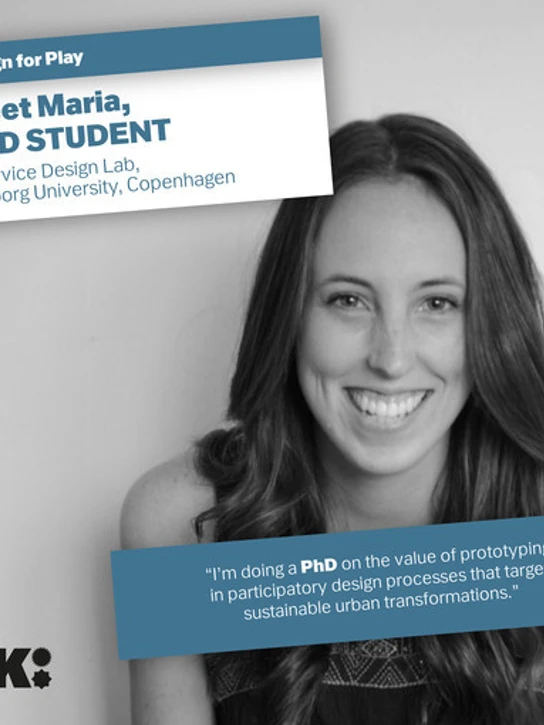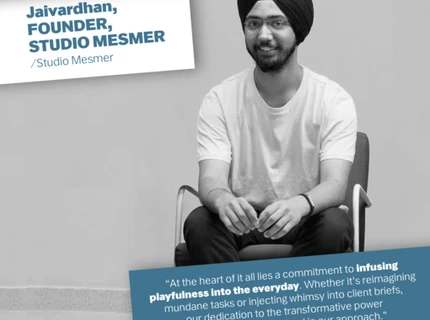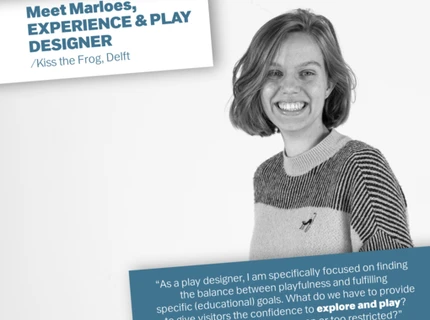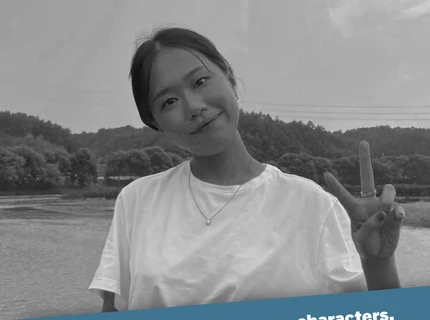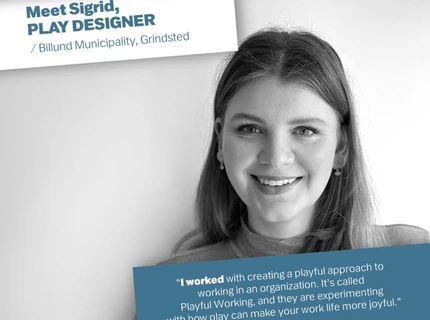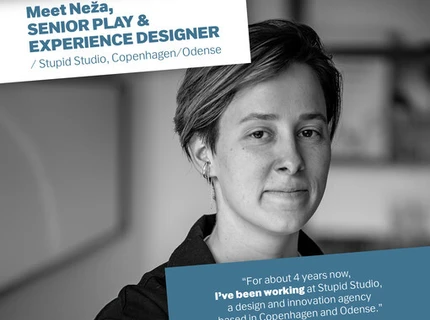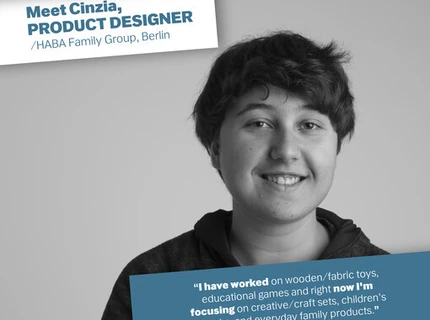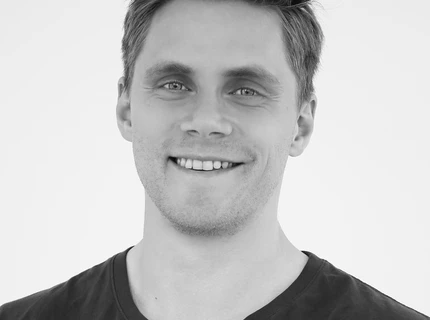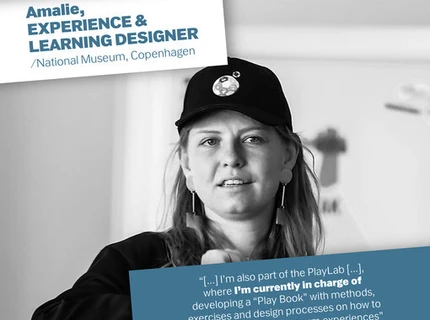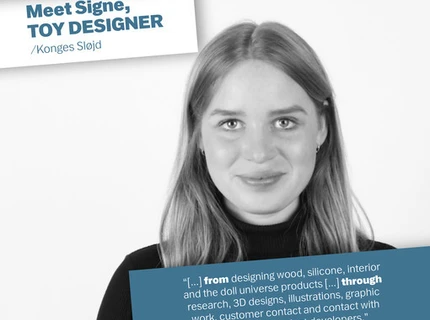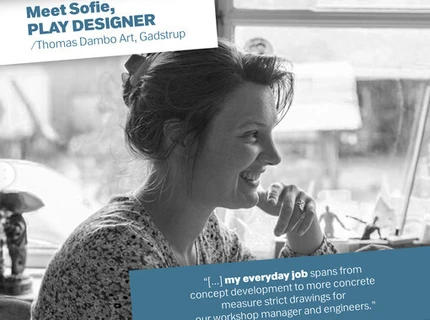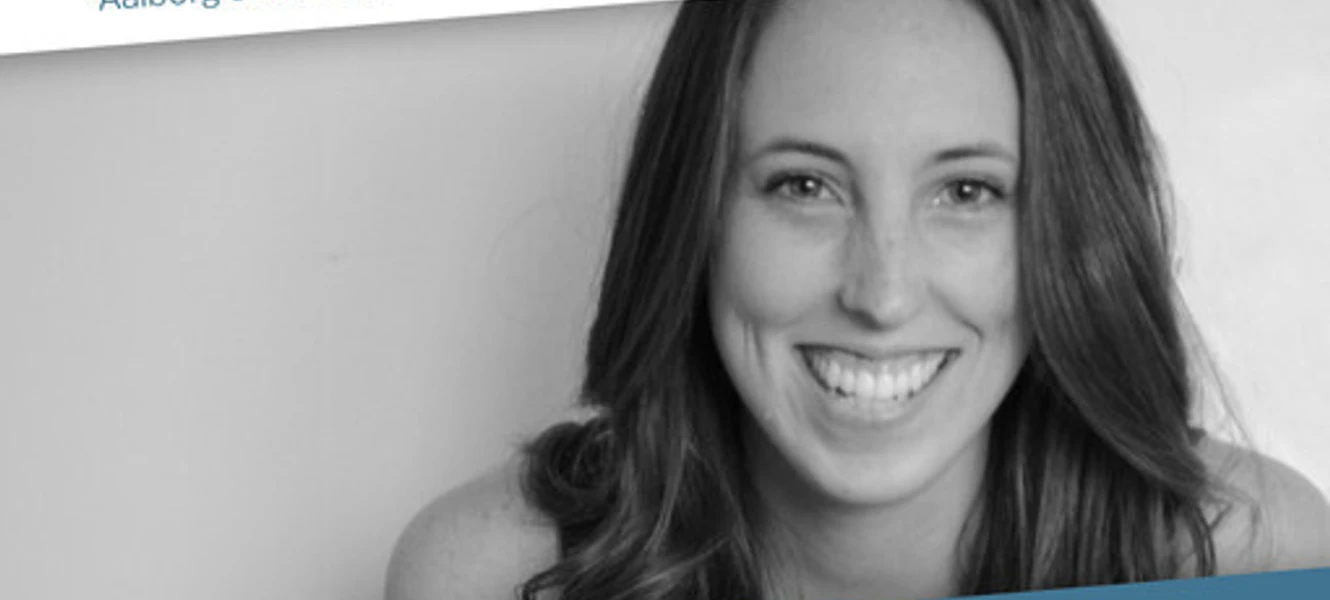
Meet Design for Play alumnus Maria Vitaller del Olmo
Maria Vitaller del Olmo
Tell us a bit about yourself!
I'm originally from Spain and am currently located in Copenhagen. I was trained as a Science Teacher (Bachelor in Educational Sciences from Universidad Autónoma de Madrid), did a postgraduate course in Service Design and Human-Centered Innovation, and then came to Denmark to study in the first promotion of the Design for Play Master’s programme at Kolding School of Design.
Where do you work at the moment? What is your role and what are your tasks?
I work at Service Design Lab at Aalborg University in Copenhagen. I’m doing a PhD on the value of prototyping in participatory design processes that target sustainable urban transformations. My research is part of a European research project in collaboration with many other European institutions, so my "fieldwork" takes part in Denmark, but also in a city in Spain, one in Italy, and one in Poland. Besides planning and carrying out design research interventions, I also collect and analyze the data and present the results in papers and other dissemination formats. As part of the Service Design Lab, my activities are also related to teaching in the MSc Service Systems Design. Besides teaching a course on Visualization and Prototyping for Service Design, I facilitate seminars, workshops, and design sprints both for our master students in Service Design and other practitioners or academics interested in our area of expertise.
What is the value of a Play designer?
One could say that academia has little room for play, but I somehow manage to bring it with me. It may not always be full play or gaming, but I spark playfulness here and there, mostly when I facilitate. And there's a lot of facilitation in our day-to-day work at the lab. My colleagues tend to consult or engage me in ideating and planning workshops because I "provide a unique view that combines teaching, design and play". I love coming up with tools, methods and exercises that reach the didactic goals and yet, are engaging and fun. Teaching Service Design Master students with a playful mindset is much more engaging for the students and me. Recently, our students designed playful learning services for the Music Museum in Copenhagen, so the theory of play became a constant in my supervision with students. Still, even if the brief is not connected to play, I'm always happy to help when a group decides to take a playful and/or child-centred design approach. But my favorite (and most challenging) part of my work is designing and facilitating workshops or participatory interventions with multiple stakeholders. I work with various stakeholders, from municipal officers to citizens, non-profit representatives, or academic experts. Each of them has essential knowledge and perspectives, and we use participatory design interventions to solve very complex challenges. Play is my secret weapon to, on the one hand, make traditional design methods less intimidating to all of them and, on the other hand, to create a safe and relaxed environment so they feel comfortable sharing their knowledge, perspectives, and concerns.
What value has the Design for Play master’s program played in your current work?
I think some essential skills and learnings from the program that help me in my role nowadays are:
- The training in academic and design-based research.
- The opportunity to practice facilitation of workshops, interventions, and all sorts of activities engaging all kinds of stakeholders.
- The playful mindset, even in "serious" scenarios. One good example of the last two points was the 6-week project my fellow student Keila Zari and I did at Billund Municipality. We designed a series of interventions to facilitate a team of 5 professionals from different departments in the decision-making and definition of the project mission and vision and co-designed a concept for their communication to future users. They didn't even know what a Play Designer could do in the first meeting. Still, throughout the interventions, we could perceive how they became more and more engaged in the process and experienced the potential of using play in the design process. You can read more about it in my portfolio website: www.vitallerdesign.com/playline
Do you have any advice to give to someone undertaking this educational path?
Have fun! It’s an excellent mix of theory and practice and skilled classmates from different backgrounds and worldwide. You’ll also have a lot of freedom in your projects and new areas to explore. Whether you’re more into toys, playgrounds, processes, or children, let yourself be surprised by challenging briefs when collaborating with companies and institutions. You’ll have plenty of opportunities to apply and explore play in different contexts, so you can figure out what your preferred path is and, in the meantime, build a solid portfolio.
